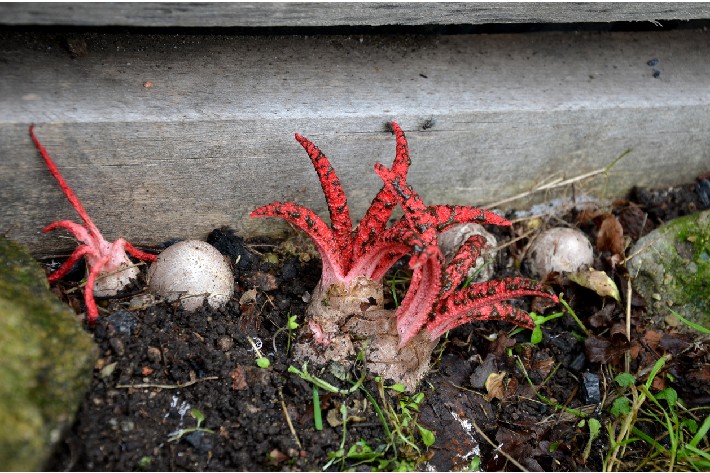Fungi to Fertilizer: Here’s How to Make Mushroom Compost

Mushroom compost, known as “black gold” among gardeners, is a nutrient-rich and eco-friendly fertilizer, ideal for improving soil health and supporting robust plant growth. This compost is crafted from the spent substrate used in mushroom cultivation and presents an efficient recycling method for agricultural and household waste. This guide takes you through the straightforward process of making mushroom compost. It also highlights the numerous benefits this compost brings to your garden. With a focus on simplicity and effectiveness, this blog aims to equip you with the knowledge needed to create a valuable and sustainable addition to your garden.
Understanding Mushroom Compost
Mushroom compost is a byproduct of the mushroom cultivation process. When mushrooms are grown, they require a substrate (usually a mix of organic materials like straw, corn cobs, and other agricultural byproducts) to support their growth. Once the mushrooms have been harvested, the remaining substrate is rich in organic matter and mycelium, making it an ideal base for nutrient-dense compost.
Steps to Make Mushroom Compost
Gather Spent Mushroom Substrate
Begin by obtaining spent mushroom substrate from a local mushroom farm or growing your own mushrooms at home. The substrate will consist of a mix of organic materials that have already supported mushroom growth.
Prepare Additional Organic Materials
To enhance the compost mix for your traditional or electric composter, gather additional organic materials such as straw, hay, leaves, and kitchen scraps. These materials will contribute to the overall nutrient content and structure of the compost.
Create Compost
Set up compost by layering the spent mushroom substrate with the additional organic materials. Aim for a balanced ratio, incorporating both carbon-rich (straw, leaves) and nitrogen-rich (mushroom substrate, kitchen scraps) components to ensure proper decomposition.
Add Water
Moisten the compost with water to achieve the ideal moisture content. Mushroom compost benefits from a damp but not waterlogged environment. This promotes the growth of beneficial microorganisms responsible for decomposition.
Turn and Mix
Regularly turn and mix the compost piles to facilitate the decomposition process. This aeration helps prevent compaction and ensures even decomposition of the materials. Turning the compost also encourages the proliferation of beneficial fungi and bacteria.
Monitor Temperature
Mushroom compost generates heat during decomposition, and monitoring the temperature is crucial. Aim for temperatures between 130°F to 160°F (54°C to 71°C), as this range supports the breakdown of organic materials and eliminates potential pathogens and weed seeds.
Cure the Compost
After the initial decomposition, allow the compost to cure for a few weeks. This curing period allows the compost to stabilize and reach a state where it is safe for use in the garden. During this time, the compost will continue to mature.
Benefits of Mushroom Compost
Nutrient-Rich Soil Amendment
Mushroom compost is a powerhouse of nutrients, including nitrogen, phosphorus, potassium, and various trace elements. When added to the soil, it enriches the nutrient profile and promotes healthy plant growth.
Improved Soil Structure
The organic matter in mushroom compost contributes to improved soil structure. It enhances water retention in sandy soils and promotes better drainage in clay soils. It also creates an optimal environment for root development.
Enhanced Microbial Activity
The mycelium present in the spent mushroom substrate introduces beneficial fungi to the compost. These fungi, along with other microorganisms, contribute to the breakdown of organic matter.
Recycling Agricultural Waste
Mushroom compost is a sustainable practice that repurposes agricultural waste, turning spent mushroom substrate into a valuable resource. This recycling approach not only reduces waste but also contributes to a more circular and eco-friendly gardening system.
Suppresses Soil-borne Diseases
The heat generated during the composting process helps eliminate potential pathogens and weed seeds. Applying mushroom compost to the soil can contribute to disease suppression and create a healthier environment for plant growth.
Conclusion
Making mushroom compost is a rewarding and sustainable practice that transforms spent mushroom substrate into a nutrient-dense fertilizer. By following the steps outlined in this guide, gardeners can create a valuable soil amendment that not only enhances plant growth but also promotes soil health and sustainability. Embrace the power of fungi to create “black gold” for your garden.
Decades of Combined Expertise
Best Buy Guidebook is a culmination of online publishing lessons learned. From SEO to paid ads, our team has experienced the highest of highs and the lowest of lows. Our goal now is simple: Arm readers with the most information possible.
